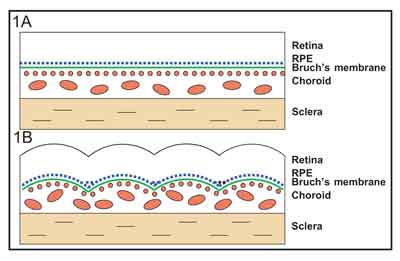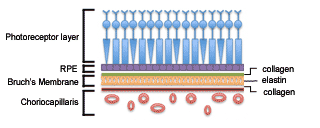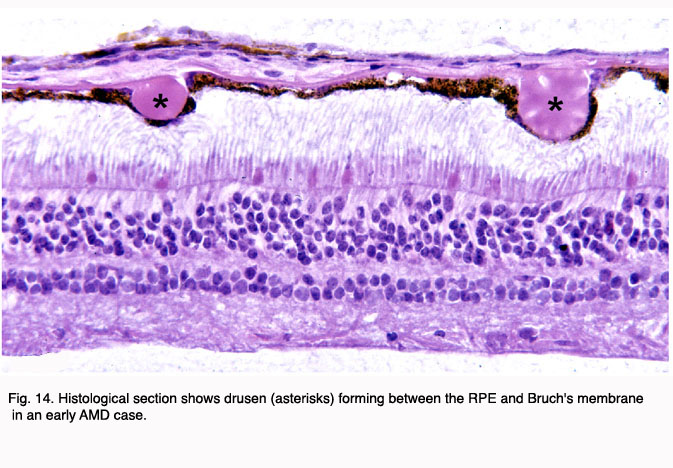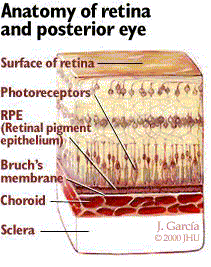Bruch's membrane
The Bruch's membrane is a limiting membrane between the choroid ( choroidal ) and the retinal pigment epithelium ( RPE) of the eye. Its key tasks are: " antagonist" of the musculus ciliaris ( ciliary muscle, ciliary body ) in accommodation and the provision of transportation of nutrients and fluid between the RPE and the vascular layer of the choroid ( choriocapillaris ).
It was named after its discoverer Karl Wilhelm Ludwig Bruch ( born May 1, 1819 in Mainz, † January 4, 1884 in Heppenheim ) named.
Structure
Bruch's membrane is made up of five layers ( from the outside to the inside):
- Basement membrane of the vessels of the choriocapillaris
- Outer collagen fiber layer
- Layer of elastic fibers
- Inside collagen fiber layer
- Basal membrane of the retinal pigment
Pathophysiology
Over the physiological aging, the Bruch's membrane changes. It leads to a change in the protein composition, and a thickening of the membrane. Moreover arise at the interface between pigment epithelium and Bruch's membrane deposits ( " drusen ", "basal laminar deposits "). These changes are likely to be involved in the pathogenesis of age-related retinal diseases.








